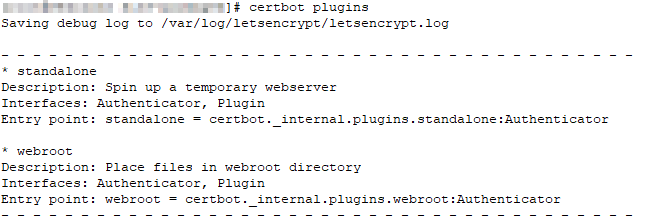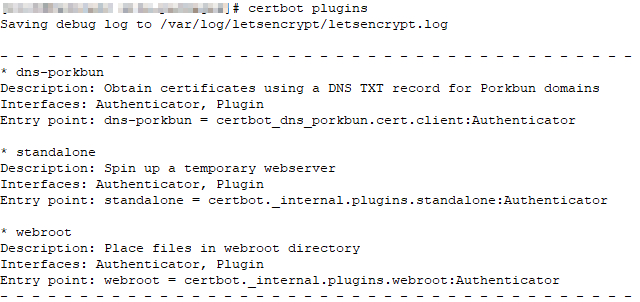I got a certificate expiry warning this morning — an oddity because I’ve had a cron task renewing our certificates for quite some time. Running the cron’d command manually … well, that would do it! The plug-in for my DNS registrar isn’t found.
Checking the registered plugins, well … it’s not there.
Except it’s there — running “pip install certbot-dns-porkbun” (and even trying pip3 just to make sure) tells me it’s already installed. Looking around for the files, this turns out to be one of those things that there’s obviously a right way to solve and a quick way to solve. For some reason, /usr/local/lib is not being searched for packages even though it’s included in my PYTHONPATH. The right thing to do is figure out why this is happening. Quick solution? Symlink the things into where they need to be
ln -s /usr/local/lib/python3.10/site-packages/certbot_dns_porkbun /usr/lib/python3.10/site-packages/ ln -s /usr/local/lib/python3.10/site-packages/pkb_client /usr/lib/python3.10/site-packages/ ln -s /usr/local/lib/python3.10/site-packages/filelock /usr/lib/python3.10/site-packages/ ln -s /usr/local/lib/python3.7/site-packages/tldextract /usr/lib/python3.10/site-packages/ ln -s /usr/local/lib/python3.10/site-packages/requests_file /usr/lib/python3.10/site-packages/ ln -s /usr/local/lib/python3.10/site-packages/certbot_dns_porkbun-0.2.1.dist-info /usr/lib/python3.10/site-packages/ ln -s /usr/local/lib/python3.10/site-packages/filelock-3.6.0.dist-info /usr/lib/python3.10/site-packages/ ln -s /usr/local/lib/python3.10/site-packages/pkb_client-1.2.dist-info /usr/lib/python3.10/site-packages/ ln -s /usr/local/lib/python3.7/site-packages/tldextract-3.0.2.dist-info/ /usr/lib/python3.10/site-packages/ ln -s /usr/local/lib/python3.10/site-packages/requests_file-1.5.1.dist-info /usr/lib/python3.10/site-packages/
Voila, the plug-in exists again (and my cron task successfully renews the certificate)





